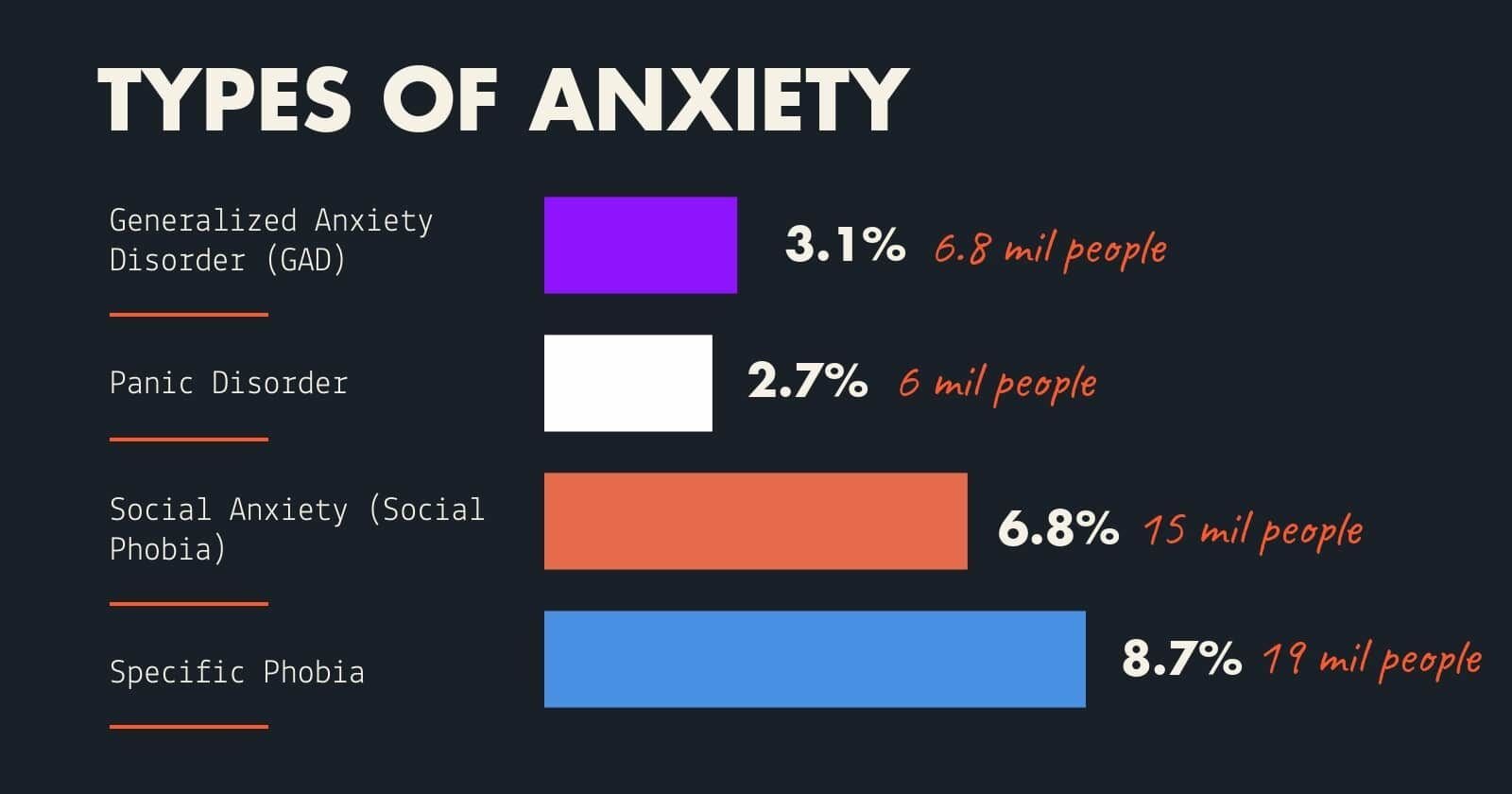Types of Anxiety
Agoraphobia is a type of anxiety disorder in which you fear and often avoid places or situations that might cause you to panic and make you feel trapped, helpless, or embarrassed.
Generalized anxiety disorder includes persistent and excessive anxiety and worries about activities or events — even ordinary, routine issues. The worry is out of proportion to the actual circumstance, is difficult to control, and affects how you feel physically.
Panic disorder involves repeated episodes of sudden feelings of intense anxiety and fear or terror that reach a peak within minutes (panic attacks). You may have feelings of impending doom, shortness of breath, chest pain, or a rapid, fluttering, or pounding heart (heart palpitations). These panic attacks may lead to worrying about them happening again or avoiding situations in which they've occurred.
Selective mutism is a consistent failure of children to speak in certain situations, such as school, even when they can speak in other situations, such as at home with close family members. This can interfere with school, work, and social functioning.
Separation anxiety disorder is a childhood disorder characterized by anxiety that's excessive for the child's developmental level and related to separation from parents or others who have parental roles.
Social anxiety disorder (social phobia) involves high levels of anxiety, fear, and avoidance of social situations due to feelings of embarrassment, self-consciousness, and concern about being judged or viewed negatively by others.
Substance-induced anxiety disorder is characterized by symptoms of intense anxiety or panic that are a direct result of misusing drugs, taking medications, being exposed to a toxic substance, or withdrawal from drugs.
Anxiety…
Anxiety is an emotion characterized by feelings of tension, worried thoughts, and physical changes like increased blood pressure. People with anxiety disorders usually have recurring intrusive thoughts or concerns. They may avoid certain situations out of worry. They may also have physical symptoms such as sweating, trembling, dizziness, or a rapid heartbeat.
What Does It Look Like?
Common anxiety signs and symptoms include:
Feeling nervous, restless or tense
Having a sense of impending danger, panic or doom
Having an increased heart rate
Breathing rapidly (hyperventilation)
Sweating
Trembling
Feeling weak or tired
Trouble concentrating or thinking about anything other than the present worry
Having trouble sleeping
Experiencing gastrointestinal (GI) problems
Having difficulty controlling worry
Having the urge to avoid things that trigger anxiety
What Can I Do?
Is this stress or anxiety?: Difference between stress and anxiety
I’m having a panic attack: Ways to calm down
Find A Therapist: Therapists near me
Call Someone: Crisis Warmline

